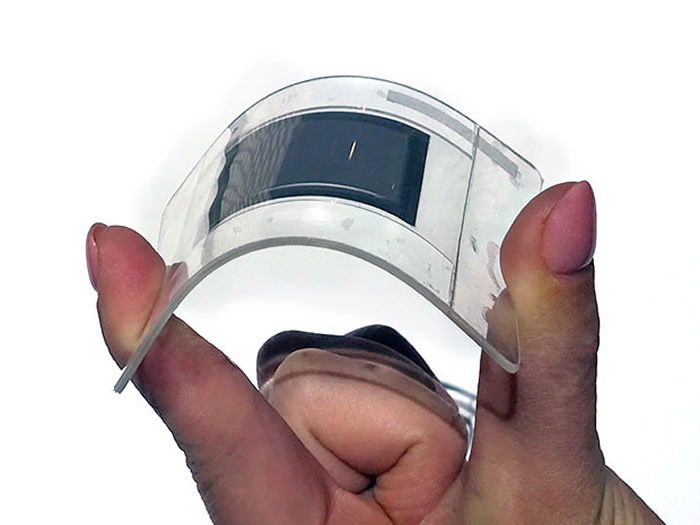CES 2017: Bendable battery for IoT wearables
Batteries are bulky and rigid components that can’t easily be modified or eliminated. So when product developers design a new device, the battery is often the limiting factor in determining size, shape, and flexibility.
But this year at CES in Las Vegas, Panasonic is showing off a new type of lithium-ion battery that could change that. The razor-thin silver wafer can be twisted or bent 1,000 times and still maintain 80% of its capacity. Panasonic presented three versions of the new battery at CES: Each is slightly smaller than a credit card and bendy enough to fit around a soda can’s contours.
The project has been under way since 2008, but Panasonic just started talking about it in September. Yoriko Yagi, assistant chief of planning in Panasonic’s wearable energy department, said the battery is now ready for mass production, which she expects will begin sometime between April 2018 and March 2019.
“Our small devices are increasing, like wearables and IoT devices, and the product design depends on battery size,” Yagi said. “If we want small devices, we need small batteries.”
Panasonic’s bendable battery, which is just 0.45mm thick, is relatively low capacity. The largest version, known as CG-064065, has a maximum capacity of 60mAh, and the smallest comes in at 17.5mAh. For comparison, the largest smartphone batteries boast around 3,500mAh.
That means the new battery is best suited for wearables, cardlike devices, and Internet of Things applications. The company began providing samples to potential clients in October, but it has not yet publicly stated a price for the battery.
In the future it may be possible to scale up its design to create a flexible smartphone or tablet. “Basically, we can do that, but we’re not targeting on that product,” Yagi says. Lest we forget, high-capacity lithium-ion batteries, like the ones found in smartphones, are prone to fires and explosions (RIP, Galaxy Note 7). Safety concerns have led Panasonic to focus on wearables and IoT devices and their low energy needs, for now.
Plenty of other companies and researchers are working on flexible lithium-ion batteries, but Yagi said Panasonic’s version offers the best performance and most rigorous testing record to date.
To create it, the company had to rethink some classic elements of battery design. Lithium-ion batteries are made up of an anode—a positively charged electrode, made of lithium oxide—as well as a cathode, which is a negatively charged electrode, made of graphite. These two layers are separated by an electrolyte, which is a liquid or gel substance full of ions. As a battery is charged, lithium ions pass through this solution and are stored in the cathode. When the battery is powering a circuit, the ions pass back through the electrolyte to the anode.
Most of the time in lithium-ion batteries, the individual cells where all of this happens are cylindrical in shape, with the anode and cathode layers wrapped around each other. Bending or twisting the cylinder causes the outermost layer to move further relative to the innermost layer. As a result, the electrodes lose their alignment, and the battery capacity erodes over time.
To make a flexible version, Panasonic researchers decided to ditch the cylinder approach and stack the electrodes right on top of each other in a slim rectangular wafer, rather than wrapping them around one another. Then they enclosed the battery in a proprietary flexible casing made of a secret aluminum compound.
How to charge the battery was another challenge. The battery must be recharged wirelessly because Panasonic didn’t want to make room for, say, a thick USB cable port on its otherwise slim form. Unfortunately, most wireless chargers on the market deliver so much power that it would overwhelm the capacity of the tiny device, which can handle a maximum charging current of just 60mAh.
In the end, Panasonic built its own wireless charging stations, which it will sell along with the battery to customers. Yagi said a single charge may last for about four weeks if the battery is used for a relatively simple application such as counting steps in a fitness monitor. With CG-064065 and its siblings poised for mass production, Yagi is looking forward to exploring that possibility, and many more. “I think there’s a lot of potential in the future for this kind of battery,” she said.
More information: IEEE Spectrum



Comments are closed, but trackbacks and pingbacks are open.